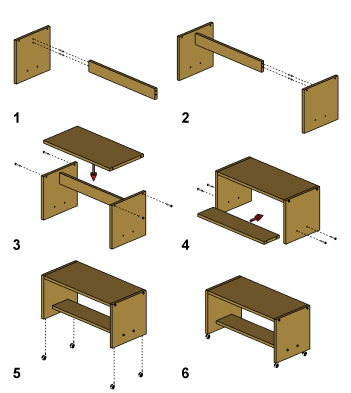Designing Effective Step-By-Step Assembly Instructions
Microsoft Research
Stanford University
Stanford University
Stanford University
Stanford University
Stanford University
Stanford University
Abstract
We present design principles for creating effective assembly instructions and a system that is based on these principles. The
principles are drawn from cognitive psychology research which investigated a person's conceptual models of assembly and effective
methods to visually communicate assembly information. Our system is inspired by earlier work in robotics on assembly planning and in
visualization on automated presentation design. Although other systems have considered presentation and planning independently, we believe it
is necessary to address the two problems simultaneously in order to create effective assembly instructions. We describe the algorithmic
techniques used to produce assembly instructions given object geometry, orientation, and optional grouping and ordering
constraints on the object's parts. Our results demonstrate that it is possible to
produce aesthetically pleasing instructions for everyday objects that are easy to follow.


Paper
Video
AVI
(720x486) (200 MB)
AVI
(360x240) (60 MB)
PowerPoint